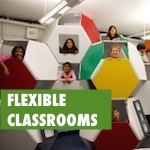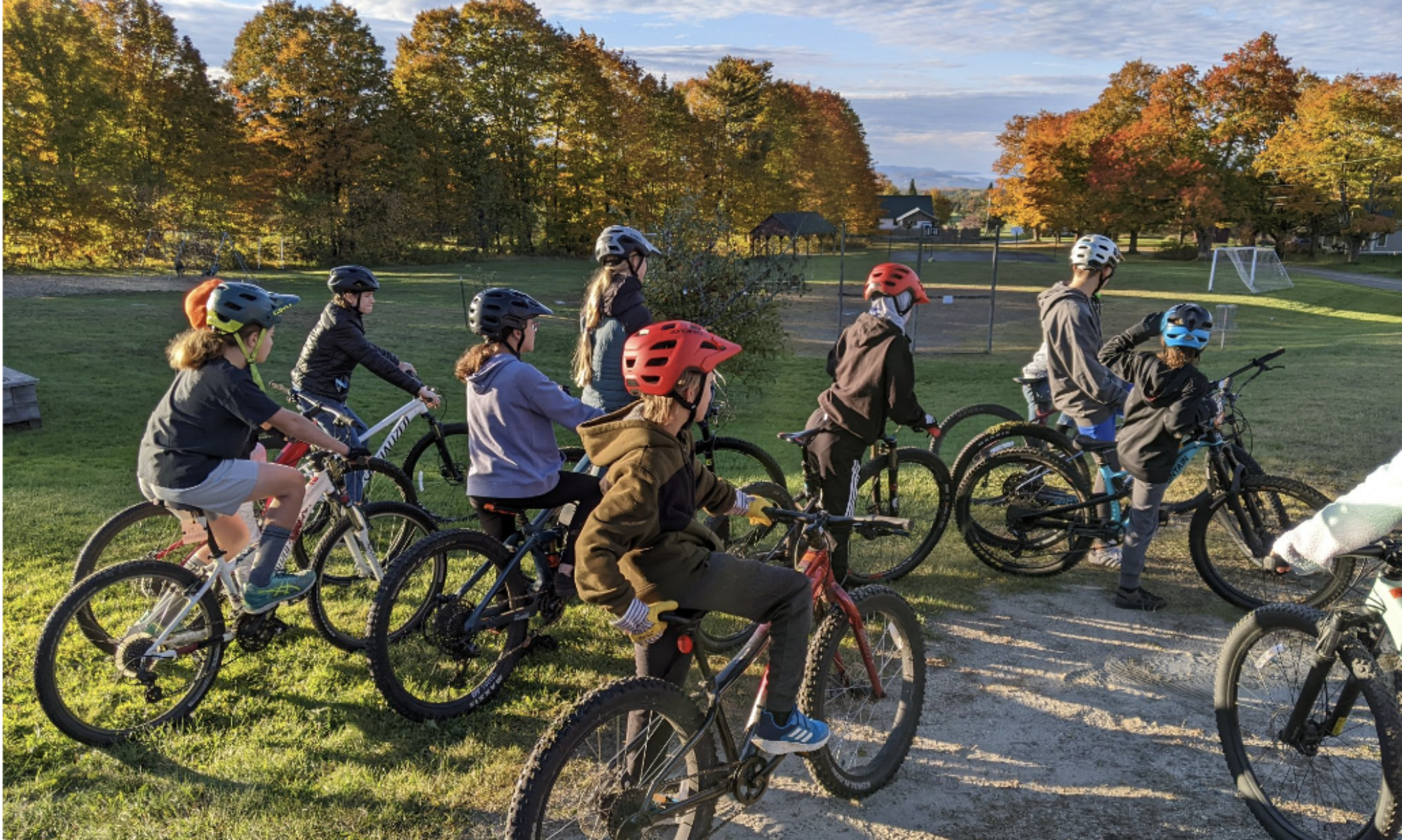A visualization exercise for changing classrooms
 It’s not your imagination. It really is the time of year when everyone gets a little wiggly. (Or a little more wiggly than usual.)
It’s not your imagination. It really is the time of year when everyone gets a little wiggly. (Or a little more wiggly than usual.)
But how does your classroom layout respond to that energy? Does it honor it or stifle it? Can your students fling their arms wide to express their excitement over an idea, or are they squished into one-size-fits-someone seats with no rollers? The upcoming summer is a great time to plan a bold new layout for your new cooperative learning space.
Unsure where to begin? Let’s through an activity together to evaluate the state of your classroom (and other learning spaces), and make concrete steps for transformation.
Guiding Questions:
First up, consider the following:
- How does the functionality of classroom furniture and layout support characteristics of young adolescents and best practices for learning? (form and function)
- How can the design and layout of open spaces (hallways, lobby, cafeteria, etc.) help create a welcome environment for students/parents/teachers/community?
- What role can green space play in supporting the environment as well as curricular interests?
- Where can shifts in budget allow for a resources to support furniture, display spaces, and green space?
And by consider, I mean interact with the guiding questions in some way. Write out your answers, record your answers out loud on your phone while you’re jogging or make a spreadsheet.
Dance it out.
Relate/Think:
Next, review the guiding questions, examples, and resources, and relate them to your classroom and school context.
- Read: A Place for Learning: The Physical Environment of the Classroom
- Read: Designing Collaborative Spaces for Schools
- Look at Physical Space In Schools – By Eric McDowell
Visualize how everyone — students, teachers, visiting collaborators, administrators and families — interact with the learning space, then visualize how they could interact with it.
If you can, take all the furniture out of your room (be patient, administrators) and ask students to move through a learning activity as if the furniture they’d prefer was present.
Take the temperature of your learning spaces — literally
Do a little science: collect temperature data in your classroom, in the lunchroom, and outside. Record the data in a spreadsheet, and have your students do a performance task like a Kahoot! quiz or a quick spelling bee. Do their scores fluctuate with the temperature?
But don’t stop there: what does your classroom smell like? Be honest — or better yet, turn that question right over to the students and stand back — and make a list of what types of odors exist, and how they can be mediated or removed if distracting. What can you hear in your classroom, in the hallways, or out on the grass?
Take inventory of the physical space around you.
This can include classrooms, hallways, open spaces, outside the school — go wild! — and document these spaces with photos. If you have access to a school map, why not use Thinglink to connect your photos to the map?
Create a list of activities that take place in each space and analyze if the space is adequate to support these activities.
Are there other activities you and your students want to try next year? This librarian took an unexpectedly empty corner of the library and used student input to make it a makerspace.
Collaborate and Plan/Discuss
Assemble your cooperative learning space team! How many students are on it? (The correct number is ≥ 1). Discuss the following:
- What is the vision for the learning spaces in our school? What do we value?
- What is it that we want to change?
- What resources can we leverage to support this transformation?
- How can we tap the collective knowledge of students to help design these spaces?
- What are the financials resources needed over the next 5 years to support this change?
Reflect and Document
Possible prompts:
- How does the form and function of physical space allow for more collaborative learning?
- How can we be intentional about creating a warm and welcoming space that celebrates students work?
And then of course, create your accountability piece:
- Who will work on this?
- What’s the timeframe for moving forward?
- Who needs to have a voice in this process?
- Are any of your students interested in presenting on the proposed new learning spaces to the administration, the rest of your team or other interested parties?
Other resources for research:
- Transforming Learning with Physical Spaces
- Collaborative Classrooms google search
- SteelCase
- Smith System
- Collaboration on Wheels: 21st Century Classroom Furniture at Work
- Pictures from Innovative Schools

